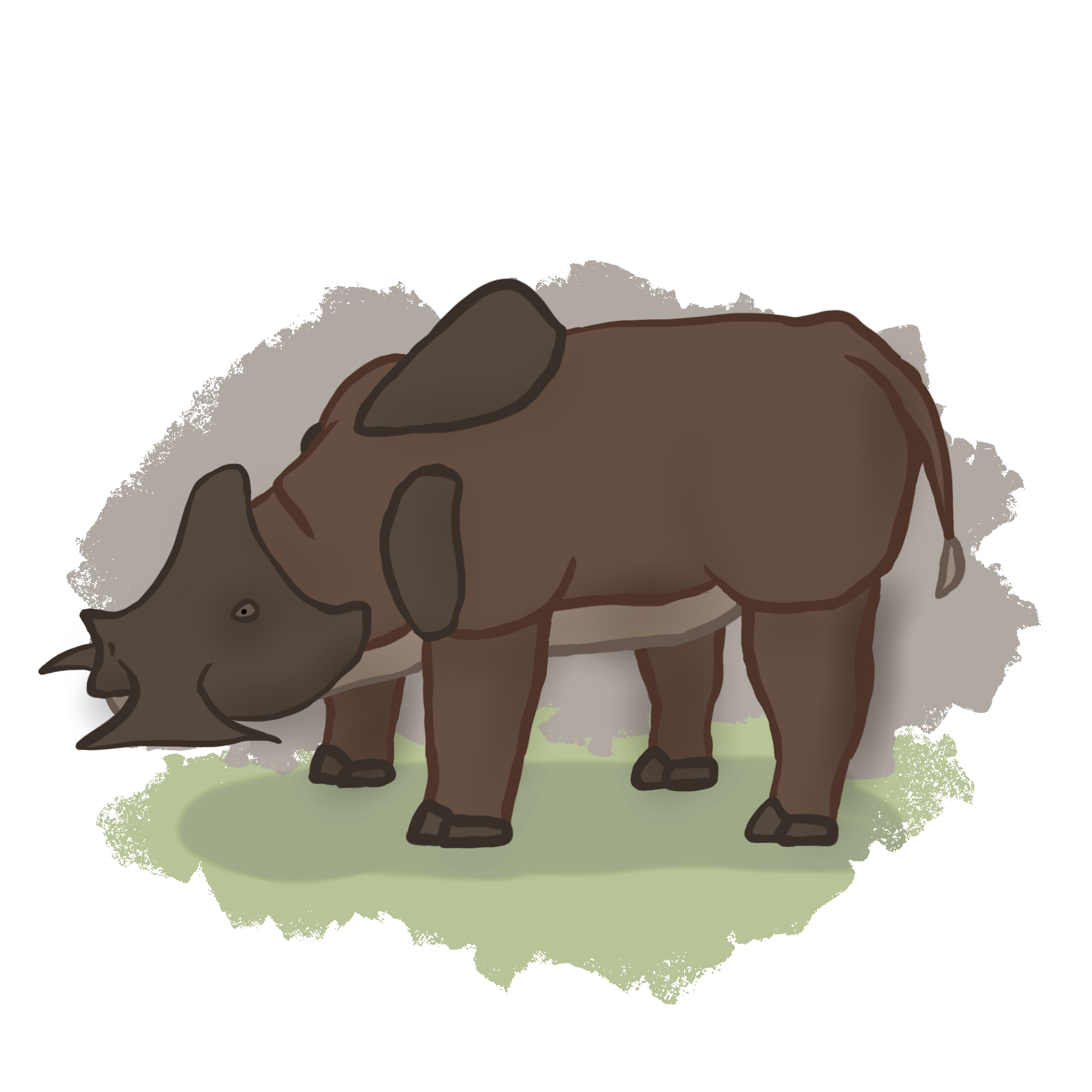Bestiary
Ata

Steppe Rhinoceros. The steppe rhinoceros is a massive beast with an armored faceplate and an axe-like horn on each side of the head. They aren't very smart and don't see well. They travel alone or in small herds across the steppes south of the Atan Divide.
Stone Snail. The stone snail is a large snail that resembles a rock. They are rare, found only in certain cave systems of the Atan Divide. It is unclear what they eat for nutrients. Their shell and slime coating takes on the same color as the stone they live on, suggesting they eat on the rock itself. Very rarely, a stone snail will cross an ore seam and metallic spirals will appear in its shell. Poaching of stone snails for trade in Gabroria is causing a decline in native populations; fine specimens fetch an exorbitant price in dwarvish high society, where they are popular pets.
Dire Wolf. Dire wolves are larger and smarter than normal wolves, with bone-like spurs on their backs. They primarily hunt megafauna in the north, but every few years a pack wanders south of the Divide.
Giant Elk. In northern Ata, giant elk are counted by some as the greatest game to hunt. Their antlers can span over 10 feet tip-to-tip. Atan giant elks have thicker pelts and larger antlers compared to Verdanian giant elks.
Gabroria
Axebeak. Axebeaks are tall birds with axe-like beaks. They prey on small creatures, but are preyed upon in turn by sabre cats. Riding an axebeak is a dangerous game played by gnomish thrillseekers and delinquents; they are uncontrollable and quick to attack with their beak.
Sabre Cat. Sabre cats are apex predators in the hills of southwestern Gabroria. Their brutal, sword-like teeth aren't used as weapons until the prey is subdued.
Tundra Bison. Tundra bison are an uncommon species only found in the far northeast of Gabroria. They travel in large herds. Some remote groups of silver dwarves use them as cattle.
Umber Bear. Umber bears are one of the largest land predators. They get their name from the dirt that often covers them.
Pyrmies
Pygmy Elephant. The pygmy elephant is a pony-sized elephant native to the jungles of the Pyrmies. They can be very friendly and intelligent and are often used by the smallfolk as mounts and beasts of burden.
Storm Falcon. Storm falcons are deadly aerial predators that hunt in storms. They can take down prey much bigger than themselves by repeatedly divebombing and hiding in stormy conditions.
Verdania
Akararyx. The akararyx is a small, feathered predator with a large claw on each foot. Native to Dragon Island, it was brought to Verdania by soraskan sailors to hunt hobrats on their ships. The name is from Elvish and means something like "unskilled flier".
Giant Elk. In central Verdania, giant elks are revered by wood elves. Verdanian giant elks are slightly smaller and have much shorter antlers than those found in Ata. Some bond with wood elves and let themselves be ridden.
Hobrat. Hobrats resemble large rats and often feature warty growths on their faces and tails. They are most common on the northern islands. Their skill at swimming and climbing makes them terrible vermin on ships, and their size makes them too large to be hunted by normal cats. Nearly every hobrat carries a disease called hobwart that can be fatal if not treated. Worst of all, hobrats sometimes gather into swarms to kill and eat larger creatures.
Sea Crocodile. Sea crocodiles are bigger, faster, and more dangerous than their river-dwelling cousins. They are adapted for fully marine life, with fin-like limbs and a finned tail. They hunt mainly fish and turtles in shallow seas. Sailors know that small boats aren't safe in waters home to sea crocodiles, especially at night when the beasts are most active.
Global
Roc. The roc is an immense bird. Only a few are believed to exist at a time. Many expeditions searching for the fabled roc roosts have been led, but none have been successful yet. It is said that rocs hunt young whales.